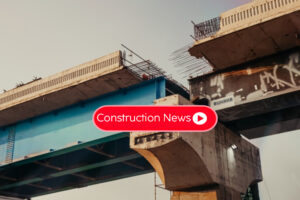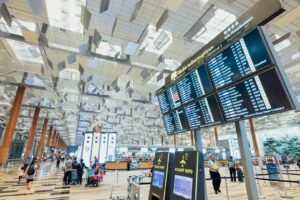Indonesia, a vibrant and diverse nation in the midst of continuous development, is actively enhancing its transportation sector. In a significant stride towards modernizing transportation infrastructure, the sector has achieved notable progress this year with the official launch of two advanced transportation projects integrated into the National Strategic Project (PSN).
These groundbreaking projects are major railway initiatives in Indonesia, namely the Jabodebek Light Rail Transit (LRT) and the Jakarta-Bandung High-Speed Train project. Despite initial plans for simultaneous inaugurations, they were consecutively inaugurated in close succession.
Responding to the urgent need for advanced and modern mass transportation in the face of escalating urbanization, Indonesia is steadily advancing its efforts. This commitment is underscored by the recent milestones, marking the inauguration of two cutting-edge public transportation systems operating on tracks.
First Transportation in Line: Jabodebek LRT
The first to roll into action was the Jabodebek LRT project, officially unveiled by President Jokowi on Monday, August 28, 2023. The inauguration of this light rail project, a personal favorite of President Jokowi, took place at the Jabodebek LRT Station in Cawang, East Jakarta.
Constructed at a cost of Rp 32.6 trillion, the 41.2-kilometer LRT network seamlessly connects Cibubur, Bekasi, and extends to Dukuh Atas in central Jakarta. Although construction commenced in 2015 with an initial target for completion in 2019, operational commencement was achieved in 2023.
The motivation behind LRT’s development was the perpetual traffic challenges in Jakarta. President Jokowi emphasized that DKI Jakarta consistently ranks among the top 10 most congested cities globally. The daily influx of 996 thousand vehicles into DKI Jakarta contributes to congestion and pollution.
To address this, the government has been diligently constructing mass transportation modes such as MRT, LRT, KRL, Transjakarta, and Airport Trains. The aim is to encourage the public to transition from private vehicles to mass transportation. With a budget of Rp 32.6 trillion, this project is anticipated to alleviate traffic congestion and reduce pollution.
This project stands as a testament to the nation’s achievement, boasting a domestic component level (TKDN) exceeding 60%. While not the first light rail system in Indonesia, the Jabodebek LRT is the first to operate without a driver. It employs GoA Level 3 technology, allowing driverless operation while maintaining a constant safe distance between trains.
Utilizing double tracks, the LRT is designed to connect city centers, business hubs, and residential areas. Its high speed and ample passenger capacity make LRT an appealing option to relieve pressure on congested land transportation networks.
Next Stop of Transportation: WHOOSH High-Speed Train
The progress in Indonesia’s public transportation doesn’t stop there. In early October 2023, President Jokowi inaugurated the Jakarta-Bandung High-Speed Train, marking the end of its seven-year-long construction.
While the LRT provides a regional solution, the High-Speed Train project establishes faster and more efficient inter-city connections. This revolutionary mode of transportation travels on specifically designed tracks, connecting key cities.
The high speed of the Jakarta-Bandung High-Speed Train reduces travel time between cities, facilitating the mobility of the population and opening economic opportunities along its corridor. This project not only enhances connectivity but also creates investment prospects and developments along the High-Speed Train route.
President Jokowi emphasized that the Jakarta-Bandung High-Speed Train is the first of its kind in Southeast Asia, boasting speeds of up to 350 kilometers per hour.
He also revealed that the train is named “Whoosh” due to the inspiration drawn from the sound of high-speed trains zooming by.
Construction of the Jakarta-Bandung High-Speed Train began in 2016, covering a track length of 142 kilometers that links Halim Station, Karawang Station, Padalarang Station, and Tegalluar Station. However, Karawang Station has yet to be opened.
With an average speed of 350 kilometers per hour, the high-speed train only takes 30-45 minutes to connect Jakarta and Bandung.
The construction cost of the High-Speed Train amounted to US$7.2 billion or around Rp 18.58 trillion (with an exchange rate of Rp 15,490). This figure includes cost overruns incurred post-COVID-19 pandemic.
With the introduction of LRT and the Jakarta-Bandung High-Speed Train, Indonesia demonstrates its commitment to advancing the transportation sector. This initiative is not just about moving people but also about creating a solid foundation for sustainable economic growth and a healthy environment. Furthermore, it is a tangible step by the government to continue building infrastructure for the convenience of the public.
Infrastructure Development in Indonesia is Not Easy
Despite the successful progress of some infrastructure projects like the two aforementioned transportation systems, infrastructure development in Indonesia is deemed challenging. This is due to Indonesia’s geographic conditions as an archipelago. President Joko Widodo conveyed this sentiment during the inauguration of the Operation of 4G BTS Signals Bakti and the Integration of the Indonesian Republic 1 Satellite (Satria-1) in the Talaud Islands.
“Our country is vast, with 17,000 islands, featuring diverse geographic conditions. Therefore, the preparation of infrastructure, including roads, ports, airports, and healthcare and education infrastructure, is not easy,” stated President Jokowi, observed online on Thursday (December 28, 2023).
“It’s not like other countries that have only one landmass,” President Jokowi continued.
He explained that Indonesia needs connectivity to link one island to another, one province to another, and one region to another to strengthen national unity.
“We have built various connectivity infrastructures, including sky tolls, to ensure equal access to the digital world for all layers of society, including in BTS development,” he concluded.




 20% off today. Whatsapp us!
20% off today. Whatsapp us!